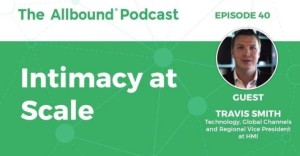 Travis SmithAllbound Blog and Podcast, Global Channels and Regional Vice President for HMI Performance Incentives (as well as CEO and Founder of Move the Channel), joins Jen Spencer to discuss channel partner incentive programs, intimacy at scale, engaging the middle 60% of your partners and more on the 40th episode of The Allbound Podcast.
Travis SmithAllbound Blog and Podcast, Global Channels and Regional Vice President for HMI Performance Incentives (as well as CEO and Founder of Move the Channel), joins Jen Spencer to discuss channel partner incentive programs, intimacy at scale, engaging the middle 60% of your partners and more on the 40th episode of The Allbound Podcast.
Want to listen? Subscribe on iTunes here.
People talk about incentivizing sales reps, gamifying experiences, incentivizing your channel… How have you seen incentives put to use in the channel?
There are a lot of buzz words out there. It’s tough to know what’s the appropriate strategy when it comes to engaging, not with just your channel partner, right? And I think of the channel partner at the organizational level. And then there’s the channel sales person, the person, the human that works for the partner organization, or the partner sales engineer, or customer support.
When most people think of incentives, they think of the reward. And don’t get me wrong, the reward is so critical. If you don’t have the right reward, and the reward isn’t motivating, your strategy is dead on arrival. And more than ever, the reward options are more compelling to your target audience. We’re seeing huge trends towards experiences, and sporting events…not just merchandise. You can actually pick out the event, the theater, the summer concert. And don’t stop there but pick the date, the venue, the seat. And what about booking a hotel, and a shuttle to the show. All this online in the incentive program, real time. And it’s really, really cool. But let’s be honest, compelling rewards are the baseline, that’s just the beginning. And I think what’s most exciting that we’re seeing at HMI is how channel incentives are solving big problems… big challenges in the channel. Most people don’t think of incentives like solving challenges.
80% of revenue comes from 20% of partners, or even more. A lot of that goes back to recruitment, and then how you’re engaging, how you’re maintaining mindshare. What are your thoughts on this principle?
There are people out there that just accept it, and the statistics would be tough to argue that. HMI specifically is uniquely positioned to help with this dilemma. It’s way easier to move up an existing customer, a partner, than it is to find and train a new one. Recruitment and finding new partners always needs to be part of your plan. But, if we could just take a look at that middle 60%, and focus on them. There’s a great opportunity to move them up to that next level. And the challenge has between with performance incentives and channel incentives is a lot of companies roll out these blanket reward programs. And when you do that, you have the same 20% hitting those goals and enjoying the rewards, or the president’s club trip to Hawaii.
Taking a page out of Allbound’s book here, today, it’s all about personalizing it, and customizing it to each individual person. The technology wasn’t there five years ago. But today, each person that logs in to an HMI system for example, has a completely unique experience. They see their unique goal or threshold, or unique promotion that’s available to them because they sell a certain product or in a certain region, or there’s unique rewards available to them. All depending on their demographics or how we’ve segmented the customer/partner database. Those goals are based on how much they sold from the previous quarter, or how much they sold from the previous year. It’s not this, “You have to sell this for us to get our attention,” it’s, “If you show us progress, we’re gonna invest back in you.” And we call this intimacy at scale.
Where do you see the future of partner programs going?
The strategy used to be “build it and they will come”. And that included all these resources. And they would build these things and put these libraries in place. And back in the day when there was only a handful of vendors doing that, they actually had a little bit of success. They would actually get their partners to come and use these resources. But today, there is just so much noise. Everybody has these resources that they expect their channel partners to come to and access and use. And it’s not happening, and it’s not gonna happen in the future. It’s not, “build it and they will come”.
What we’re seeing now is…and where I see the future is, it’s not getting all these assets and resources. It’s how can you integrate with your partner? How can you integrate? And you’ve always tried to integrate your product into theirs. You’ve got to keep doing that. You’ve got to integrate your marketing into theirs. And you’ve got to keep doing it better. But the real advance is gonna be, how can you integrate with the buying experience? And can you help your partners be more effective out there selling, and help them through the journey? We don’t have all the answers there but it’s starting to crystallize. Again, companies like Allbound are doing things in ways that people had never seen before or considered just a few years ago. And those are areas of advancement that are starting to show us the future of channel marketing programs. On the HMI side, five years ago we weren’t having intimacy at scale, and customizing each participant’s experience in the channel incentive program. Today we are. There’s a long way to go, but that’s where it’s heading. Those are gonna be the vendors that win. The ones that can integrate into the buying experience.
To learn more about channel partner incentive programs, intimacy at scale, engaging the middle 60% of your partners, and more tune in to episode 40 of The Allbound Podcast.
Enjoy the what you’re reading? Take a minute to let everyone else know how much you love the Allbound Podcast and leave us a review on iTunes. Thanks!
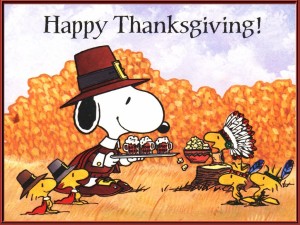


 This can be achieved by shining a spotlight on the five important channel behaviors that can transform into eventual sales. This spotlight is your channel engagement platform. A channel engagement portal blankets over all your channel resources and makes it easy for your partner’s people to identify the top 5 key plays (behaviors) that lead to sales. Those plays might include: certification trainings, viewing a new product launch video, downloading a new case study, reading a recent favorable Gartner report, setting a meeting with the regional business development manager, a new account introduction, or whatever else we know continues to move the sticks for fresh set of down.
This can be achieved by shining a spotlight on the five important channel behaviors that can transform into eventual sales. This spotlight is your channel engagement platform. A channel engagement portal blankets over all your channel resources and makes it easy for your partner’s people to identify the top 5 key plays (behaviors) that lead to sales. Those plays might include: certification trainings, viewing a new product launch video, downloading a new case study, reading a recent favorable Gartner report, setting a meeting with the regional business development manager, a new account introduction, or whatever else we know continues to move the sticks for fresh set of down.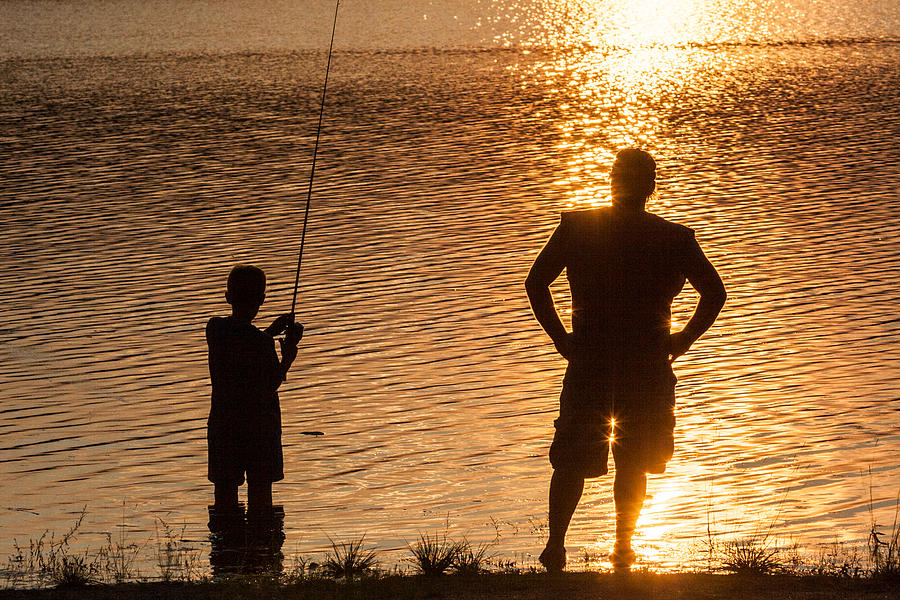


 focus ALL of your energy not on fighting the old, but on building the new. – Socrates
focus ALL of your energy not on fighting the old, but on building the new. – Socrates
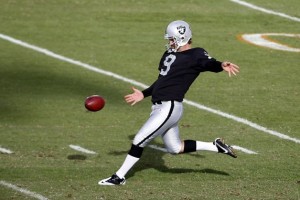

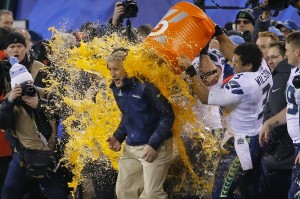



 personal message inside. It’s a terrific gesture of respect and inclusion in your go-to-market strategy.
personal message inside. It’s a terrific gesture of respect and inclusion in your go-to-market strategy.